2012 Hyundai Accent Review
Considering how much of a wretched piece of junk the old Hyundai Accent was, improving on the car (once known for being offered at a sub-$10,000 sticker price) was an easy task. With such a strong current line-up, the previous Accent was an embarrassing blight on the company’s product range, and competition from the Ford Fiesta, Honda Fit and Toyota Yaris meant that Hyundai would have to make sure the next Accent was a winner right from the start.
FAST FACTS
| 1. The 2012 Accent gets a best-in-class 30/40-mpg fuel economy rating. |
| 2. Making 138-hp and 123 lb-ft of torque it’s well-ahead of its rivals in power. |
| 3. Starting at just $12,445 for a base GLS 4-door sedan, hatchback models retail from $14,595. |
From our first drive impressions in the Nevada desert, we’re happy to report that the Korean auto giant has succeeded, producing a car that is more than a match for the Ford Fiesta, one of the subcompact segment benchmarks. We decided to take a spin in a GLS hatchback, which Hyundai is positioning as the top dog, with a sportier look and feel as well as favorable levels of equipment.
IMPROVED LOOK HARDLY THRILLING
Visually, the Accent looks quite similar to a Fiesta, so much so that in the rear view mirror, we often mistook it for its American competitor. Upon closer inspection, the styling cues themselves are all Hyundai, with details like the lights and grille resembling the larger Elantra. However, the Accent seems larger than its dimensions suggest, a factor that should help ease the ridiculous stigma of driving a sub-compact.
BIGGER CHANGES INSIDE AND ON THE ROAD
The Accent’s interior is much simpler than the Fiesta, lacking the SYNC integration and offering fewer buttons and more intuitive controls. Hyundai insists that the interior is a “premium” offering due to its “piano black” trim smattered around the cockpit, and we honestly can’t help but shrug our shoulders. We doubt any consumer will really care at this price point, but materials are light years away from the low rent crap in the previous car, and everything appears well put together.
Where the car really comes close to “premium” status is on the road. Everything is quiet, with wind and engine noises carefully insulated from the cabin, while the ride is smooth and well composed. Hyundai fitted monotube shocks to the 2012 Accent, which are more expensive than the typical twin-tube design, but the extra money shows when the Accent hops over expansion joints or cracked pavement with virtually no fuss, whereas other competitors would let you know that you just hit a bad stretch of road. The Accent’s steering does lack the heft that makes the Fiesta feel like a “driver’s car”, though you’re never in doubt regarding what the front tires are doing. Given that the Accent uses an electric power steering system, remedying this matter would only take a few software changes.
BEST-IN-CLASS FUEL ECONOMY AND POWER
Power for the Accent comes from a 1.6-liter 4-cylinder engine with direct-injection, a first for the segment. With 138 horsepower and 123 lb-ft of torque, it’s significantly more than the current competition, but on par with the upcoming Chevrolet Sonic’s 1.4L turbocharged engine – though that car musters a significant 148 lb-ft of torque. Unlike the rest of the competition, the Accent will deliver 30-mpg in town and 40-mpg on the highway, with either an automatic or manual transmission and without the aid of any special aerodynamic packages. While these numbers are impressive, we couldn’t help but wonder why Hyundai was unable to squeeze better figures out of the Accent, when the heavier Elantra manages the exact same fuel economy digits with a larger engine – and one that doesn’t have direct injection. One Hyundai rep told us that the gearing on the Accent was different, and the extra mpg was left on the table in favor of better in-gear acceleration numbers.
We didn’t get to sample the 6-speed automatic, but found the 6-speed manual well matched to the engine. While it lacked any pretense of sportiness, the shifter and clutch are a breeze to operate in traffic, and on the highway we found ourselves cruising comfortably in 6th without any undue noise or vibration. This is one area where the Fiesta loses out to the Accent, and while “fun-to-drive” might be on the radar of auto journalists everywhere, comfortable highway driving is far more relevant to any potential subcompact buyers.
SPACIOUS INTERIOR WITH PLENTY OF CARGO ROOM
Other less exciting matters like cargo space and interior volume are also high points for the Accent, with rather generous helpings of both available in the Hyundai. The company says that the Accent boasts more cargo room than the Nissan Juke and greater interior volume than the Audi A4, no small feat for a vehicle with a fairly minute footprint.
If you’re looking for exact numbers, the sedan’s trunk space is rated at 13.7 cu-ft. The 5-door hatch gets even more space with 21.2 cu-ft out back, which then grows to 47.5 cu-ft when you drop the second row. It’s lots of space, but still no one comes close to the near 60 cu-ft available in the Fit.
Our 5-door model came well equipped with the requisite features like Bluetooth connectivity, iPod jacks, ABS, stability control and curtain airbags. Retailing for $15,795 (plus another $1,000 for the automatic gearbox), the Accent also represents substantial value in this segment, offering excellent bang-for-buck. If you’re on a real budget a base GLS sedan ca be had for $12,445, although you’ll want to spend an extra $1,750 to add on air conditioning and power windows.
THE VERDICT
Like the rest of Hyundai’s lineup, the Accent is a compelling product that’s priced right and comes with the features that consumers are gravitating towards in droves. But rather than being sold on price, or “just good enough” to make the cut, the Accent is a legitimate contender in the field, one that could arguably be the choice vehicle in a segment that will matter more and more as gas prices increase and personal fortunes decrease.
The strongest competition yet could be from Kia’s upcoming Rio – a car that shares most of its underpinnings with the 2012 Accent, but may end up retailing for just a bit less. Our only reservation about the Accent is the unfortunate connotations attached to the Accent nameplate. A Hyundai rep even admitted that the stigma was so strong, the company looked into changing the nameplate altogether, but ultimately decided against it. We hope that consumers can look past the car’s sordid history and vote with their pocketbooks. After all, it wasn’t long ago that the Elantra and Sonata were in the same boat.
RELATED READING
2012 Chevrolet Sonic Review: First Drive
2011 Ford Fiesta: First Drive
2010 Honda Fit Review
2009 Toyota Yaris
LOVE IT
- Great value for the money
- 40 mpg without needing to opt for a specific model
- Good road manners
LEAVE IT
- Styling is handsome but not ground breaking
- Steering lacks some of the precision of competitors
- Manual transmission not engaging
More by Derek Kreindler















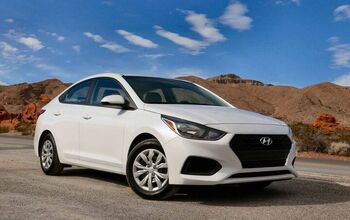
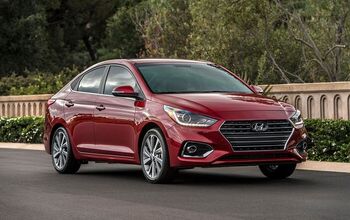

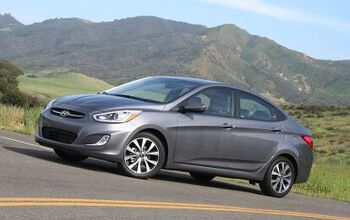
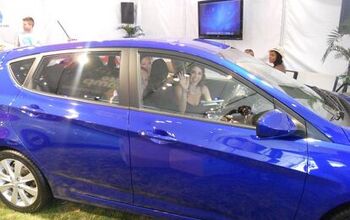
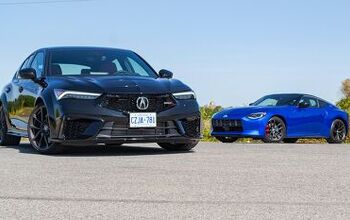


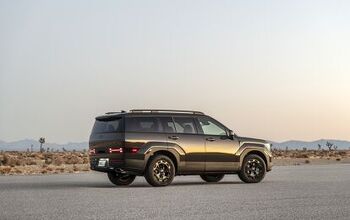
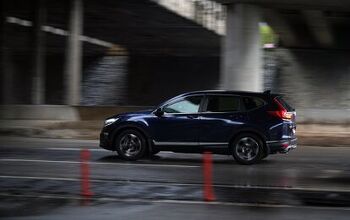
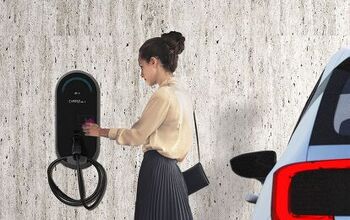





Comments
Join the conversation
competition from the Ford Fiesta, Honda Fit and Toyota Yaris meant that Hyundai would have to make sure the next Accent was a winner right from the start.
The Accents steering does lack the heft that makes the Fiesta feel like a drivers car, though youre never in doubt regarding what the front tires are doing. Given that the Accent uses an electric power steering system, remedying this matter would only take a few software changes.